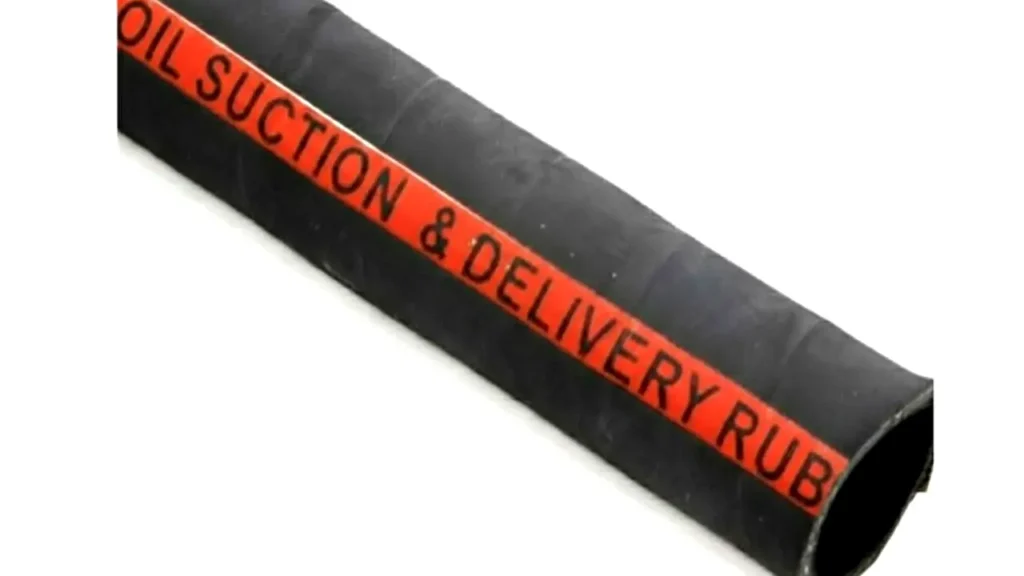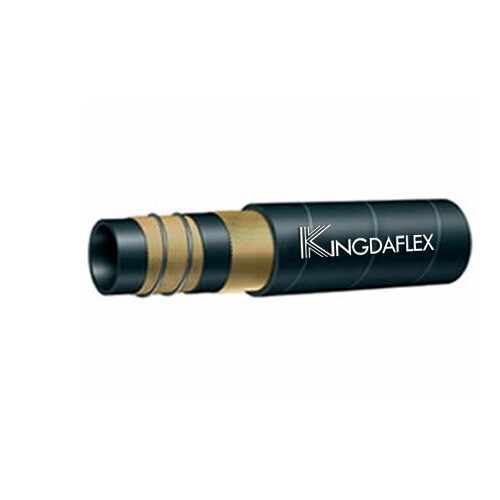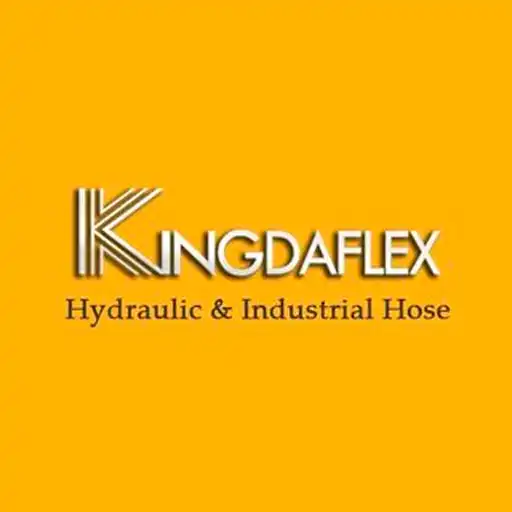In fluid transfer systems, two critical components are the suction hose and the delivery hose (also known as a discharge hose). While both are flexible conduits for moving liquids, their designs and functions are fundamentally different. Understanding this distinction is vital for safety, efficiency, and preventing damage to pumping equipment.
The main difference lies in the type of pressure each hose is designed to withstand. A suction hose operates under a vacuum to pull fluid into a pump, requiring a rigid, reinforced structure. A delivery hose operates under positive pressure to push fluid out of a pump, focusing on pressure resistance and flexibility.
What is a Suction Hydraulic Hose?
A Suction Hydraulic Hose is a specialized, low-pressure fluid conduit designed to transport hydraulic fluid from a reservoir into the main system pump. Unlike standard pressure hoses, its primary structural feature is engineered to resist collapse, as it operates under a negative pressure or vacuum created by the pump’s inlet.
This hose, commonly meeting the SAE 100R4 specification, is essential for a pump’s health, ensuring a smooth, uninterrupted flow of fluid. Its robust construction and wire reinforcement prevent the hose from flattening under the external atmospheric pressure, thereby eliminating cavitation—air bubbles that damage pump internals.
- Vacuum Resistance Feature: The hose’s core characteristic is its internal helical steel wire embedded in the reinforcement layer. This rigid, spiral structure acts like a skeleton to maintain the hose’s full cylindrical shape, directly counteracting the suction force (vacuum) generated as the pump draws fluid from the hydraulic tank.
- Low-Pressure Service: Suction hoses function in the lowest pressure zone of a hydraulic circuit, often rated for a maximum vacuum of 25 inches of mercury (inHg). They also manage the low positive pressure found in the return line when fluid is routed back to the reservoir, making them a dual-purpose component.
- Construction Material: They are constructed with an oil-resistant synthetic rubber inner tube compatible with petroleum- and water-based hydraulic fluids. The textile braids and the wire helix provide reinforcement, all protected by an abrasion- and weather-resistant synthetic rubber outer cover.
- Primary Application: The main use is the suction line connecting the fluid reservoir to the pump intake on heavy machinery like excavators, loaders, and agricultural equipment. Correct sizing is crucial; an undersized hose can increase vacuum levels, risking hose collapse and pump damage.
What is a Delivery Hydraulic Hose?

A Delivery Hydraulic Hose, also known as a discharge hose or a pressure hose, is engineered to transfer pressurized fluid from the pump or actuator to another component in a hydraulic system. It operates under positive internal pressure, making its primary design feature the ability to withstand the force exerted by the fluid being pushed through it without bursting.
This hose must be robust to safely handle the high and often pulsating forces generated by the system’s pump. Common specifications, such as SAE 100R1 (single-wire braid) and SAE 100R2 (double-wire braid), define its construction. This design focuses on burst resistance, using layers of high-tensile wire for reinforcement, which contrasts sharply with the collapse resistance needed by a suction hose
- Positive Pressure Rating: The central function is to operate under high working pressure, ranging from medium (around 2,000 psi) to extremely high (over 6,000 psi). The hose’s strength is determined by the number and configuration of its reinforcement layers, designed to prevent the internal pressure from rupturing the hose wall.
- Reinforcement Structure: The reinforcement typically uses one or more layers of braided or spiral-wound high-tensile steel wire. Braided layers offer good flexibility and moderate pressure capacity, while spiral-wound layers are used for very high-pressure and high-impulse applications, offering superior fatigue resistance.
- Common Applications: Delivery hoses are used as the working lines connecting the pump to hydraulic cylinders, motors, and valves. They are found on virtually all heavy machinery, including construction equipment, agricultural tractors, and industrial presses, where they transmit the power necessary to perform work.
- Material Composition: Like most hydraulic hoses, the delivery hose has an oil-resistant synthetic rubber inner tube for fluid compatibility, surrounded by the steel reinforcement layers. The outer cover is a durable synthetic rubber, providing resistance against abrasion, weather, and ozone exposure.
Difference Between Suction Hose and Delivery Hose
The core difference between a suction hose and a delivery hose lies in the type of pressure each is designed to handle. A suction hose resists vacuum (negative pressure), while a delivery (or discharge) hose resists expulsion force (positive pressure).
Pressure Type and Function
A suction hose is engineered specifically to withstand negative pressure or vacuum. When a pump operates, it pulls fluid from a source, creating a vacuum inside the hose. The hose must be reinforced to prevent the external atmospheric pressure from crushing or collapsing its structure, ensuring the fluid reaches the pump’s inlet.
In contrast, a delivery hose is designed to withstand high positive pressure. Its function is to transport fluid away from the pump or actuator and push it to a destination. The reinforcement focuses on resisting the internal pressure exerted by the fluid, preventing the hose from bursting or expanding.
Reinforcement Structure
The crucial design feature of a suction hose is its helical wire reinforcement, often a spiral steel wire embedded in the hose wall. This rigid spiral provides the necessary structural integrity to counteract the crushing force of the vacuum and maintain a round, unobstructed inner diameter.
A delivery hose, particularly a high-pressure one, uses layers of braided or spiral-wound textile or steel wire that run circumferentially. This reinforcement acts like a constraint, tightly holding the hose together to resist radial expansion and failure under high internal force, like a continuous sheath.
Wall Thickness and Rigidity
Due to the internal wire helix and the need to maintain shape under vacuum, a suction hose generally has a thicker, more rigid wall than a comparable delivery hose. This increased material mass contributes to its crush resistance, although it also limits its flexibility and bend radius.
A delivery hose is typically designed to be more flexible and lighter for easier routing and installation, especially in multi-hose applications. While its wall is reinforced for pressure, it doesn’t require the bulk of the helical structure, resulting in a wall thickness optimized primarily for burst strength and flexibility.
Operating Pressure Range
Suction hoses operate strictly in a low-pressure to vacuum environment. They are not rated to handle the high positive working pressures of the main hydraulic circuits; exposing them to such pressure would risk structural damage due to their focus on vacuum performance.
Delivery hoses operate over a wide range of positive pressures, from low-pressure return lines to ultra-high-pressure working lines (e.g., thousands of PSI). Their primary limitation is their inability to handle a significant vacuum, as they lack the internal structure to prevent collapse.
Risk of Failure
The primary mode of failure for a suction hose that is used incorrectly (or is faulty) is internal collapse or flattening. If the vacuum created by the pump is greater than the hose’s reinforcement can withstand, the hose will flatten, restricting flow and leading to pump cavitation damage.
The main risk of failure for a delivery hose is bursting or rupture. This occurs if the internal working pressure or a sudden pressure spike exceeds the hose’s maximum rated burst strength, posing a significant safety hazard due to the high-velocity fluid release.
| Aspect | Suction Hose | Delivery Hose (Discharge Hose) |
| Primary Pressure Type | Negative pressure (Vacuum) | Positive pressure (Expulsion) |
| Main Function | Pulls fluid into the pump; resists collapse | Pushes fluid away from the pump; resists bursting |
| Reinforcement | Helical steel wire (Internal spiral) | Braided or spiral-wound steel wire/textile |
| Wall/Structure | Thicker, more rigid wall for crush resistance | Optimized for burst strength; more flexible |
| Primary Failure Mode | Collapse (flattening) under vacuum | Rupture (bursting) under high pressure |
How to Choose Suction and Delivery Hoses?
Selecting the correct suction or delivery hydraulic hose is critical for system safety and efficiency. A mismatch in specifications can cause catastrophic failure, downtime, and injury. The industry uses the S.T.A.M.P.E.D. acronym to ensure all key factors are addressed for a successful hose assembly.
This process highlights the unique requirements of each hose type, especially concerning pressure (vacuum vs. burst) and structure (helical vs. braided), ensuring the chosen hose is fit for its specific function in the hydraulic circuit.
- Size (S): The inner diameter (I.D.) must be properly matched to the required fluid flow rate. An undersized delivery hose causes excessive heat and pressure drop, while an undersized suction hose dramatically increases the vacuum, risking collapse and pump cavitation.
- Temperature (T): Consider both the maximum fluid temperature and the ambient environmental temperature. Exceeding the hose’s maximum rated temperature can rapidly degrade the material, leading to cracking or hardening, shortening the hose’s lifespan, and risking immediate failure.
- Application (A): Determine how the hose is routed and used, noting if it is static, dynamic (constant flexing), or subject to abrasion. Suction hoses need crush resistance, while delivery hoses in dynamic applications must meet the minimum bend radius requirements to prevent reinforcement fatigue.
- Material/Media (M): The hose’s inner tube, cover, and fittings must be chemically compatible with the fluid. Using an incompatible material can cause the tube to swell, degrade, or contaminate the fluid, which is particularly critical for seals and high-pressure system components.
- Pressure (P): For a delivery hose, the rated working pressure must be greater than the system’s maximum operating and surge pressure. For a suction hose, the vacuum rating (in inches of Hg) must be sufficient to withstand the pump’s pull without collapsing its internal structure.
Conclusion
Understanding the design and function of a suction hose versus a delivery hose is essential for maximizing the performance and longevity of your fluid transfer operations. Using a hose for the wrong application—like a standard delivery hose for suction—will likely lead to collapse and catastrophic system failure. Always check the hose’s pressure rating and reinforcement before installation to ensure compatibility with your pump’s action.
Choosing the correct hose means selecting the right construction: a steel wire helix for vacuum resistance in suction lines and high-tensile textile braids for positive pressure in delivery lines. By correctly matching the hose to the required pressure environment, you significantly reduce the risk of downtime, component damage, and costly fluid leaks.
For reliable, industrial-grade solutions tailored to both high-vacuum and high-pressure applications, get wholesale delivery and suction hydraulic hoses from Kingdaflex. Our wide selection meets rigorous SAE and industrial standards, ensuring maximum performance, durability, and a safe operation for all your fluid handling needs.


